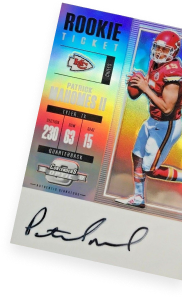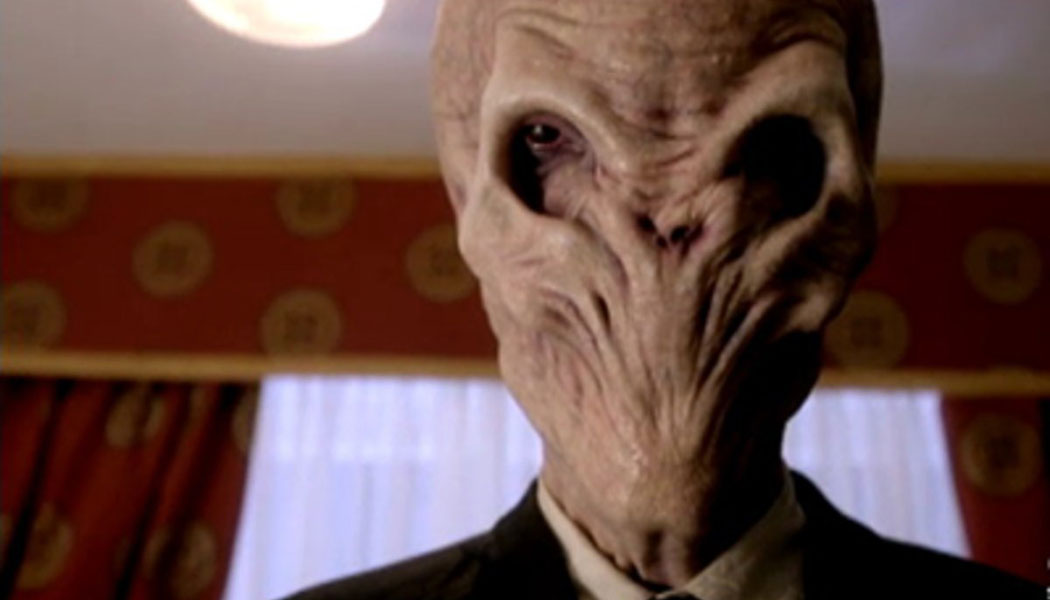Skin Deep: A Superficial History of Tattoos and Trading Cards
Over the last couple of generations, tattoos have become a common sight. However, as recently as the 1960s, tattoos were rare and exotic, considered by mainstream Americans as the marks of sailors, prison inmates, loose women, and motorcycle riders. Back then, tattoos were taboo.
Now they aren’t. Something happened since that time to change the public view of tattoos from being the mark of a dangerous person to being, frankly, a rather mundane fashion statement. There are estimates that 40% of people under the age of 40 have a tattoo of some kind, and some cultural observers have joked the real sign of a non-conformist today is a person who doesn’t have a tattoo.

Something made tattoos socially acceptable, and a big part of that may well have been the explosion in popularity of the temporary tattoo among Baby Boomers and subsequent generations. Kids who love temporary tattoos are more likely to grow up and get real tattoos.
A Temporary History
Cheap temporary tattoos have been around since at least the 1890s. Printed in sheets for a penny or given away as prizes in boxes of Cracker Jacks, these simple, crude transfers were printed with food coloring on nonabsorbent pa-per, which made it easier to transfer the designs to human skin.

This method was actually developed by real tattoo artists who wanted a way to transfer complex designs to skin so they could have a guide to use for a real tattoo. This is still done today, but somewhere along the line someone realized there was a market for temporary “tattoo flashes” and the remarkably low cost of mass-producing made them very popular as inexpensive novelties.
Tattoo You
The first generation of temporary tattoos were made by printing an image using food-coloring-based inks on a non-absorbent paper. If the paper got wet, the ink would transfer to another surface…human skin being one of those.
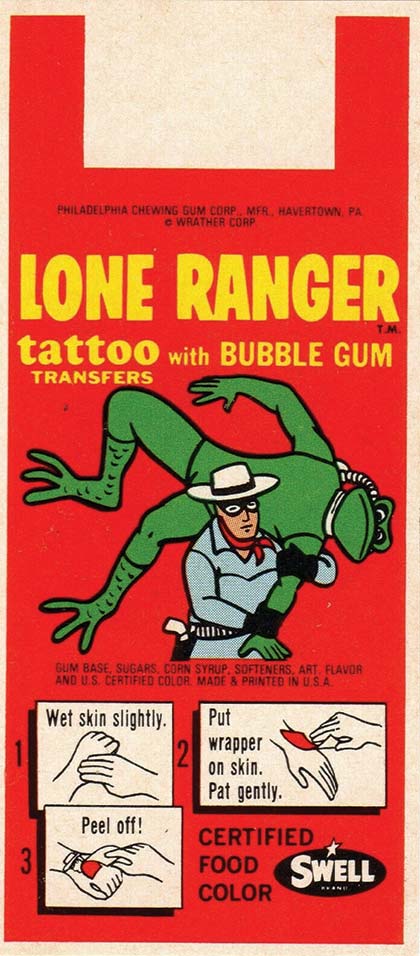
Many dealers of pre-1970 non-sport cards treat bubblegum wrapper tattoos as cards. The subject matter is pretty much the same—monsters, superheroes, cartoon characters, etc.—so it makes a good fit, albeit a niche category. The fact that the bulk of these bubblegum tattoos were produced by Topps, Donruss and Fleer is another attraction for collectors.
The drawback is that, being printed with food coloring, these tattoos are biodegradable and will deteriorate unless stored in ideal situations. Also, many were damaged simply by opening the gum, since they were printed inside the wrapper. Add to that the fact that these were consumables and not collectibles—most kids licked and applied these things instead of saving them—and you have a niche hobby that can be very expensive.

Crossover collectors of tattoo memorabilia will compete for the same limited supply of product available and that can make collecting pre-1980 temporary tattoos very intimidating and frustrating for beginners.
Tattoos Bubble to the Surface
Pop culture temporary tattoos have been around since the 1930s or before, with vintage temporary tattoo sheets of Betty Boop and Popeye still turning up fairly regularly on the secondary market, there was a real explosion in the market for licensed character tattoos following Topps’ success with a baseball set in 1960. Fleer and Donruss quickly joined into the fray.
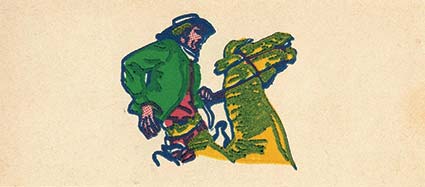
In no time tattoos wrapped about bubblegum were in vending machines and penny-candy counters everywhere. Early sets like Topps’ Superman and Monster Tatoo [sic] (with art by Jack Davis) were soon joined by an avalanche of licensed gum tattoos featuring Bullwinkle, Underdog, Mighty Mouse, The Lone Ranger…really almost every kid-favorite character from the 1960s and 1970s wound up as a bubblegum tattoo.
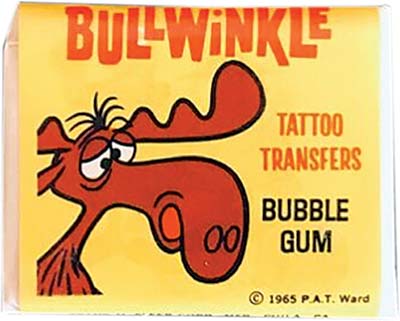
There were also loads of generic tattoos on the market, with everything from monsters to pirates to fl owers and zoo animals showing up to be transferred to the skin of kids everywhere. Topps even made bubblegum tattoos of Wacky Packages in the mid-1970s.
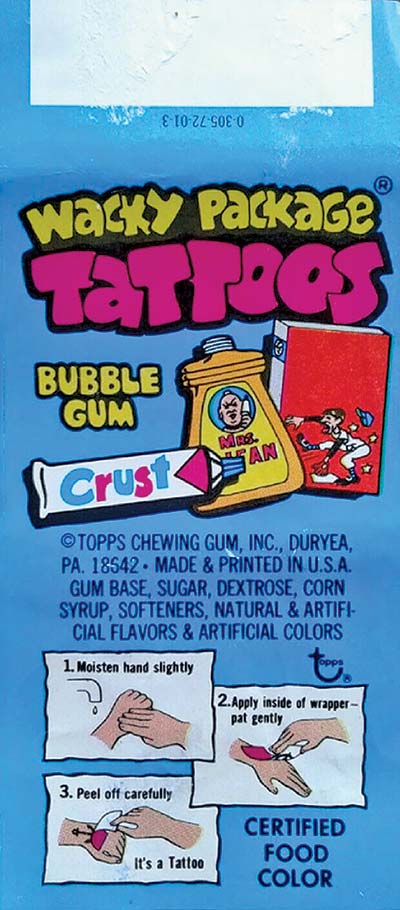
By the late 1960s, in addition to bubblegum tattoos, wax packs of tattoos in the standard trading card size flooded the market, and it’s at this point the hobby becomes a little easier to sort out, as so many of the bubblegum tattoos had no numbers or checklists, but also had several variations and running changes complicating matters.
Rubbing Up to Technology
As temporary tattoos became more popular, beginning in the 1960s, companies like Letraset in the UK and 3M in America began developing more durable temp-tats, that were more akin to a decal than a simple ink transfer, and this allowed for more elaborate designs and sharper printing. The transfer principle was the same, but the tattoo cards printed this way are much more long-lasting and easier to collect.
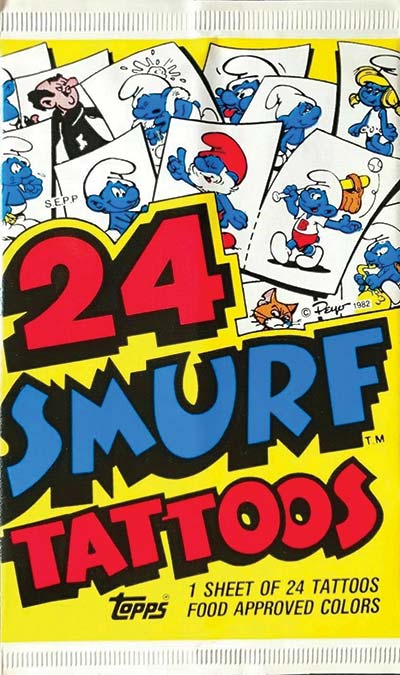
This didn’t mean the end of the food-coloring ink tattoo. Some sets, like Topps’ 1988 Pee Wee’s Playhouse Fun Pak, include old-school temporary tattoos for that special retro feel. The 1980s saw a mix of food-coloring tattoos with sets like The S m u r f s , and high-tech temporary tattoos, some of which were peel-and-stick and even scratch-and-sniff.

The Return of the Temporary
A fter a bit of a lull in the early 1980s, as the penny-candy market faded away, temporary tattoos in trading cards staged a comeback in the 1990s, both as full sets of tattoos or as special insert sets in non-sport collections. In the last thirty years there have been plenty of tattoo insert cards. Everything from The Simpsons to Star Wars to Garbage Pail Kids and Rick & Morty have had temporary tattoo inserts. There have also been entire sets of tattoo designs by famous artists like Ed Hardy and Lisa Frank.
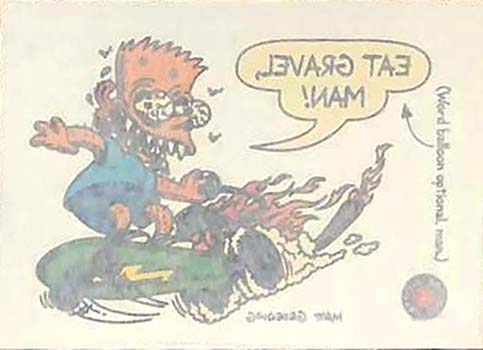
Temporary tattoos are back, although not as popular as they once were because so many folks have real tattoos now that the novelty has worn off . The fact that non-sport cards are no longer aimed at kids has lessened the appeal dramatically, too. It’s a safe bet that the vast majority of temporary tattoos produced as inserts for trading card sets since 1990 were never applied to anyone’s skin.

A Rich Niche
With a niche collectible having as rich a history as temporary tattoos, values can be all over the place, depending on where fans want to focus their collection. Generic sets like the 1981 Topps 24 Tattoos wax pack can routinely be found for a dollar per unopened pack. On the flip side, Topps 1962 Monster Tatoo, on those rare occasions when they do show up, might go for a hundred dollars for a single tattoo. This is a set that is estimated to have close to 100 differ-ent designs.
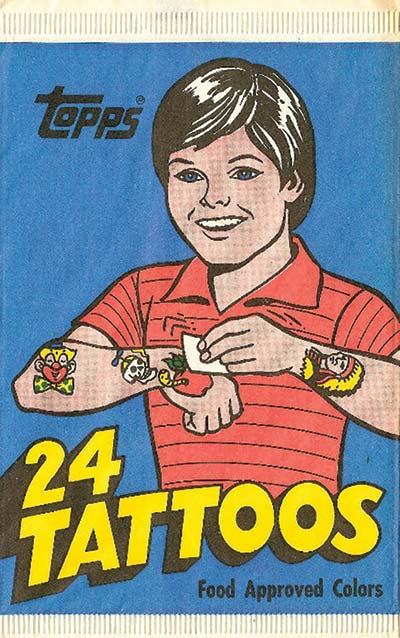
Many sets, like the aforementioned Monster Tatoo, or the 1962 Topps Superman set, were reprinted, at least in part, under a different name years later, and that can give beginning collectors a less expensive way to get their foot in the door. However, the pre-1970 market for temporary tattoos can be extremely volatile. An unopened piece of gum from the 1967 Topps Comic Book Tattoo set, featuring Superman and others, might go for upwards of two hundred dollars. Even generic temporary tattoos from before 1970 can easily command ten or fifteen bucks, or more.
Prices become more stable when looking at sets produced in the 1970s, but they can still be a bit unpredictable, depending on the property. In 1988 Pee Weeʼs Playhouse Fun Pak was overproduced, and unopened packs can be found for under ten dollars almost 35 years later. Most of the trading card inserts produced since 1990 can be found for under five bucks (sometimes way under) each, so that would probably be the best place for a beginner to start.

